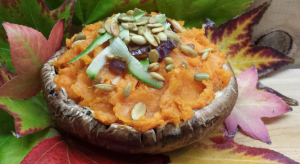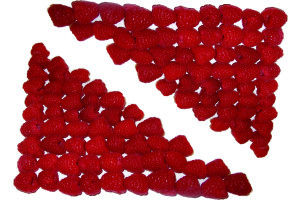
Served hot or cold this cider helps fend off winter illnesses. Gretchen M. Ashton, Photographer
A cold or the flu can prevent water sports enthusiasts from their favorite activities.
Scuba divers, surfers, snorkelers, stand up paddlers, kayakers, wind surfers, and swimmers are exposed to the elements year-round. This cider may be enjoyed chilled to cool off on a hot summer day or as a hot beverage to warm up and refuel during the winter months.
This healthy holiday cider helps boost the immune system and prevent other health maladies.
Healthy Holiday Cider is loaded with vitamins A, B1, B2, C and E. Along with the fruit juice, added coconut water contains important nutrients such as potassium, calcium, and sodium which help maintain and balance hydration. The natural sugars fructose and glucose help maintain energy, and the high fiber content helps keep digestive and elimination systems of the body functioning well. Combined anti-oxidant and anti-carcinogen properties of the pear, kiwi and watermelon help to prevent and lower high blood pressure, reduce the risk of stroke and protect cells from the damage of free radicals which can be produced during physical activity. Pear juice and cinnamon both help sooth a sore throat, a kiwi contains more vitamin C than an orange, and the lycopene in watermelon helps reduce respiratory inflammation. Cinnamon helps lower blood sugar and sooth muscle spasms among other healthful properties.
Healthy Holiday Cider
Using a juicer, wash and prepare the following:
1 Whole Pear (small to medium)
1 Whole Kiwi (rub the skin gently underwater but keep the peel)
1 Cup Watermelon (remove the rind)
Add:
1/2 Cup Coconut Water
1/2 Teaspoon Cinnamon
For more information about fitness and nutrition for diving:
Contact gretchen@scubafit.com



 Sweet Potato stuffed Portobello Mushrooms are a delicious meal for scuba divers focused on eating healthy this holiday season. As the main course or a side dish all divers will enjoy the earthy fall flavors and aromas. Vegetarian divers rely on the portobello mushroom as a meat substitute. The mushroom has small amounts of macronutrients; is naturally low in calories, fat, and sugar, with nearly equal amounts of protein and carbohydrates, and a good amount of potassium. The portobello mushroom has a neutral mild flavor that is a blank canvas for seasonings that satisfy a wide range of taste preferences. This version of stuffed portobello mushrooms is prepared on a cedar plank to add smokiness.
Sweet Potato stuffed Portobello Mushrooms are a delicious meal for scuba divers focused on eating healthy this holiday season. As the main course or a side dish all divers will enjoy the earthy fall flavors and aromas. Vegetarian divers rely on the portobello mushroom as a meat substitute. The mushroom has small amounts of macronutrients; is naturally low in calories, fat, and sugar, with nearly equal amounts of protein and carbohydrates, and a good amount of potassium. The portobello mushroom has a neutral mild flavor that is a blank canvas for seasonings that satisfy a wide range of taste preferences. This version of stuffed portobello mushrooms is prepared on a cedar plank to add smokiness.  Blowing raspberries is very different than blowing bubbles while scuba diving but can still be a lot of fun. Most of us probably don’t remember the first time we blew a raspberry as part of discovering our mouth at the age of just four to five months old. We most often blow raspberries to make others laugh because of the sound and the tickling sensation. It is usually an intimate gesture as it involves using the lips and tongue on another person’s belly to make a “pbbbt” sound. Although it originated in cockney slang, blowing a raspberry is widely and cross-culturally understood and practiced.
Blowing raspberries is very different than blowing bubbles while scuba diving but can still be a lot of fun. Most of us probably don’t remember the first time we blew a raspberry as part of discovering our mouth at the age of just four to five months old. We most often blow raspberries to make others laugh because of the sound and the tickling sensation. It is usually an intimate gesture as it involves using the lips and tongue on another person’s belly to make a “pbbbt” sound. Although it originated in cockney slang, blowing a raspberry is widely and cross-culturally understood and practiced.